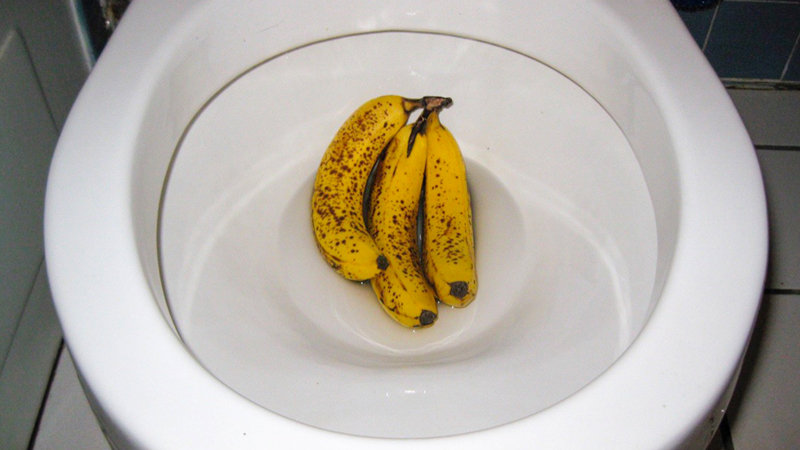Is it Feasible to Dispose of Food Waste in the Toilet?
Is it Feasible to Dispose of Food Waste in the Toilet?
Blog Article
They are making a few great pointers on What Can Happen If You Flush Food Down the Toilet? in general in this great article further down.

Intro
Many individuals are usually confronted with the problem of what to do with food waste, particularly when it pertains to leftovers or scraps. One common concern that occurs is whether it's fine to purge food down the bathroom. In this article, we'll explore the reasons why people could take into consideration flushing food, the effects of doing so, and different methods for proper disposal.
Reasons individuals may take into consideration flushing food
Lack of understanding
Some individuals might not understand the potential harm triggered by flushing food down the commode. They might incorrectly believe that it's a harmless practice.
Comfort
Flushing food down the toilet might seem like a quick and very easy remedy to taking care of unwanted scraps, especially when there's no neighboring trash bin available.
Idleness
In some cases, individuals may simply pick to flush food out of large negligence, without thinking about the consequences of their activities.
Consequences of flushing food down the toilet
Environmental effect
Food waste that winds up in waterways can contribute to air pollution and harm water environments. Additionally, the water used to purge food can stress water sources.
Plumbing concerns
Purging food can bring about clogged up pipes and drains pipes, triggering costly pipes fixings and aggravations.
Sorts of food that need to not be purged
Coarse foods
Foods with fibrous textures such as celery or corn husks can obtain tangled in pipes and cause obstructions.
Starchy foods
Starchy foods like pasta and rice can take in water and swell, causing blockages in pipes.
Oils and fats
Greasy foods like bacon or cooking oils need to never ever be flushed down the toilet as they can solidify and cause blockages.
Appropriate disposal techniques for food waste
Utilizing a waste disposal unit
For homes outfitted with garbage disposals, food scraps can be ground up and purged through the pipes system. Nevertheless, not all foods are suitable for disposal in this fashion.
Recycling
Certain food packaging materials can be reused, minimizing waste and lessening environmental impact.
Composting
Composting is a green means to take care of food waste. Organic products can be composted and made use of to improve dirt for horticulture.
The significance of appropriate waste administration
Decreasing ecological harm
Proper waste monitoring methods, such as composting and recycling, help decrease contamination and protect natural resources for future generations.
Securing pipes systems
By staying clear of the method of flushing food down the commode, property owners can avoid pricey pipes repair services and preserve the stability of their plumbing systems.
Verdict
Finally, while it might be tempting to flush food down the toilet for ease, it is necessary to comprehend the potential consequences of this action. By adopting correct waste monitoring methods and taking care of food waste properly, people can add to much healthier pipes systems and a cleaner setting for all.
FLUSH FOOD DOWN THE TOILET?
FLUSHING FOOD CAN CAUSE BLOCKED DRAINS IN YOUR HOME
All of the plumbing fixtures in your home are connected to the same sewer pipe outside of your home. This outdoor sewer pipe is responsible for transporting all the wastewater from your home to the Council sewer mains. Even small pieces of food that go down the kitchen sink can cause problems for your sewer. It should therefore be obvious that flushing larger bits of food, such as meat, risks a clog in either the toilet itself or the sewer pipes. Flushing greasy food is even more problematic because oil coagulates when it cools, coating the interior lining of your pipes.
THE TOILET IS NOT A BIN
Food isn’t the only thing that people shouldn’t be flushing down the toilet. People use the toilet to dispose of all kinds of things such as tampons, makeup wipes, dental floss, kitty litter and even underwear. Water goes to great lengths to educate residents about the high costs and stress placed on wastewater treatment systems simply from people flushing the wrong stuff down the toilet. It costs taxpayers millions of dollars each year, and homeowners thousands in blocked drain repairs.
FLUSHING FOOD IS A WASTE OF WATER
Flushing food is a waste of our most precious resource - water. In June this year Level 1 water restrictions were introduced to protect water supply from drought conditions. Much of New South Wales continues to be affected by prolonged drought with recent figures revealing up to 97 per cent of the state remains in drought. Depending on whether you have a single or dual flush toilet, every single flush uses between five and 11 litres of water. In the current climate this is a huge amount of water to be wasting on flushing food that should be placed in the bin (or better yet, the compost).
https://www.jabplumbingsolutions.com.au/blog/can-you-flush-food-down-the-toilet

Hopefully you enjoyed our article about Flushing Food Down the Toilet?. Thanks a ton for spending some time to read our article. Appreciated our content? Please share it. Help others discover it. We cherish your readership.
Click Here Report this page